HIStalk Interviews Luke Bonney, CEO, Redox
Luke Bonney is co-founder and CEO of Redox of Madison, WI.
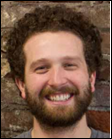
Tell me about yourself and the company.
I grew up in upstate New York in a small town in the Finger Lakes. I went to school at Cornell, graduated in 2008, and worked at Epic for six years on the implementation team. That was where I cut my teeth.
Our goal for Redox is to drastically accelerate the adoption of technology by eliminating integration as a barrier. We want to make all data in healthcare available and usable.
Right now, we talk about the exchange of data. What we care about is how to empower developers and technologists to take that data and turn it into useful information for patients and providers. We do that with our engine and the services that we provide with our engine through our platform.
In an age where modern web developers are used to building tools in the cloud, people expect to be able to exchange data with a single endpoint and a single platform. Today, that doesn’t really exist in healthcare. We have a number of standards that people have to learn. We have a fragmented ecosystem where each health system has their own version of their EHR and their legacy systems.
Two important trends have occurred – rapid, aggressive adoption of EHRs and healthcare starting to accept cloud as the direction of overall technology adoption. We represent that by offering up a single platform and a set of APIs that any Web developer can connect to.
Are non-technologists who assume that APIs can solve all interoperability problems overlooking important details?
I don’t think APIs by themselves are the answer. Standards bodies such as HL7 and others are primarily solving for the use case of how to help health systems exchange their own data. Because of that, you have to consider the extreme edge case, where your unique cocktail of legacy systems — lab systems or whatever it might be – requires you to have highly extensible format.
The developer thrives on consistency. That’s what they want and what they need. They want to be able to build something and scale it aggressively.
For us, it’s not really about a APIs by themselves. It’s about offering APIs on top of a platform where we can both connect you to all the different health systems you need to connect to and then normalize that data down to the data models that we provide. Talking about APIs unto themselves is only thinking about part of the problem.
What is the universe of data you can access and how does a developer use your system as the bridge?
Our goal is to make the way we exchange data easy and available as anybody would expect it. The short answer to that question is go to developer.redoxengine.com, where you can read the exact data that we support today. I think it’s 17 data models – core clinical data, core registration and practice management data, device data, all the way down to financial data.
We’re customer driven. We build out data models and offer APIs based on what our customers need. Each time we build out a new data model, we make it available to everybody.
Our promise is that you connect to us through a single end point. You tell us the scope of information that you need. Then we’re going to normalize data within the health systems you need to exchange with back down to that data model.
Do startups hit a dead end when companies that hold the data they need, such as EHR vendors, decline to share it?
Lots of things are moving in the industry that relate to this question. The core problem we solve is the relationship between the application and the health system. That’s where the problem lies. You have physicians or patients who want to turn on a tool. They want to have access to that technology. They want to use it and use it quickly. That’s where we focus and spend our time. Solving that problem is where there’s the most value. Turning it on and having data being exchanged. That’s the frame through which we think about the relationship with vendors, whether that is Allscripts, Athena, Epic, Cerner or anybody else.
Lots of good things are happening in that area. Groups are starting to offer marketplaces and thinking about what rolling out FHIR would mean. People are starting to embrace the idea that developers and third parties can add a ton of value. There’s also the continued signaling that we’re headed toward the cloud, which is great.
EHR vendors have to struggle with, how open do you want to be? At the core of that question is, how open are you going to be for third parties that might compete directly with some of the core functionality that you provide?
We’ll see how it shakes out over time. Where we focus is solving problems in connecting applications to health systems.
What about policies that wrap around the technology, such as legal agreements between those who hold the data and those who want to use it?
Our belief is that the data belongs to the patient. That patient is the one who is receiving care. But today, that data is an asset to the healthcare organization that provides care. So at the very core, you need to make sure that you have a business associate agreement set up with any organization that you would ever consider exchanging information with. You need to make sure you’re secure in HIPAA compliance, whether that’s through HITRUST certification or SOC 2 certification or something like that. That’s the table stakes at this point.
I think the question you’re asking is, how do the agreements shake out with some of these vendors that are starting to offer up their own APIs? We see a lot of experimentation, both in what they’re asking people to sign and with the business models they’re thinking about. Redox’s role in all of that is to provide feedback. We tell people what’s working and what’s not working because we see all of it. If there’s an opportunity to bring people together to talk about what’s working and what’s not working, we’ll try to have that conversation. But at the end of the day, we’re going to play by the rules, and if the rules don’t make sense, we’re going to figure out how to make them make sense for everybody involved.
How has investment funding and the involvement of outside investors change the company’s strategy and operations?
We had angel investing at the very beginning and then two rounds of venture investing. The way we look at funding is, is the opportunity big enough and the problem painful enough where you need to go faster than you would otherwise be able to go if you were constrained by a cash flow? The opportunity we see to solve a massive problem in healthcare helped us decide very early on that we wanted to be a venture-backed company. Any group, starting from the very beginning, has to ask themselves that question. It’s not an inevitable decision. It should be made with some intentionality.
We were thoughtful on who the investors were that we decided to work with. Whether it was luck or skill, we did pretty good there. Our investors – .406 out of Boston, Flybridge, Dreamit, and HealthX — were in our first round. Then in the most recent round, we brought in RRE and Intermountain. Each of those groups has been absolutely fantastic to work with. They’re not just investors — they also bring a huge amount of strategic advice and valuable networks to the table.
How does the startup environment in Wisconsin compare to that of Atlanta, Chicago, or the other traditional health IT centers?
I could not be more excited about what’s going on in Wisconsin. We have an opportunity in Madison – the Madison-Milwaukee corridor, more specifically — to do something huge in healthcare. Judy and Carl of Epic have been a recruitment machine and have brought incredibly smart people, incredibly hard-working people who are passionate about healthcare IT, into this area. It’s on the community to figure out how to take advantage of that and to turn it into what I think could be the major health tech hub in the country.
Before Redox, the two other founders and I worked on a healthcare IT incubator here in Madison. We started seven digital health companies. Redox came out because those companies were all going to need the services we provide with Redox. But the reason we started that incubator — it was called 100health — is because we thought that Wisconsin and Madison were poised to have a huge impact. I’m super excited about it and the community here is super excited about it as well, all the way up to the president of the Chamber, up to the full group here.
Do you have any final thoughts?
Healthcare IT is officially the sexiest place to be when you think about being a technologist and building great companies. It’s incredible because there’s so much opportunity based on progress to date and seeing what we have in front of us.
If I was a developer, if I was a health system executive, what I would see is that in the time you spend here, not only can you have a significant impact and make significant progress, but unlike any other industry, we’re all participants in healthcare. Because of that, you can see the impact of the work you do in your life, in the lives of friends and family, and in the lives of the people you love. If you’re trying to figure out what you want to spend your time on, working in this space is absolutely fantastic.
































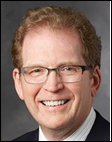


















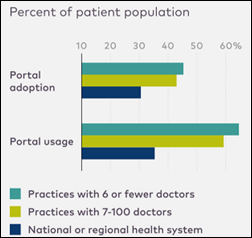




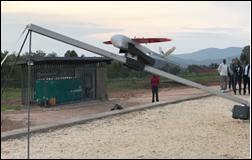







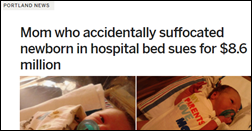
































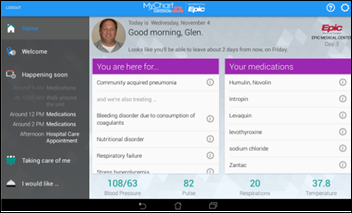














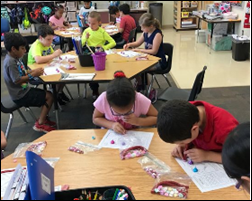

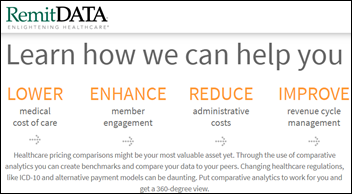






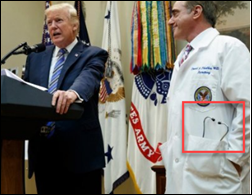


Traditionally Professional Courtesy is something that physicians gave each other - but we had to be careful with it when…